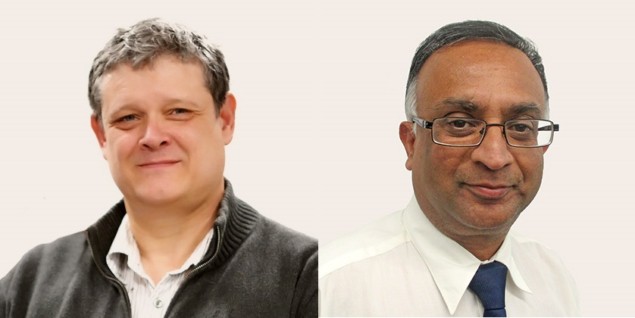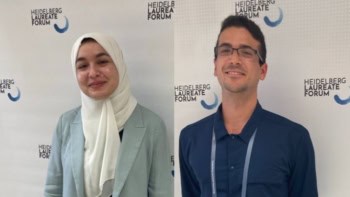
When Paul Chu first reported superconductivity in YBa2Cu3Ox at the comparatively high temperature of 93 K in 1987, imaginations were struck by the implications as to how to understand superconductivity, and how to use it. Temperatures of 93 K can be reached with liquid nitrogen, which is easy to handle compared with the liquid helium needed for lower temperatures. However, the brittleness of YBa2Cu3Ox has been a stumbling block for a lot of potential applications. Now researchers in Japan have demonstrated superconductivity in a nanopowder of YBa2Cu3Ox, without the need for heat treatments that render the material brittle. As well as using the powder as a superconducting paint, they hope to find ways of exploiting the nanoscale morphologies in the powder to incorporate additional functionalities.
“Our materials don’t represent a new material, but a new way of thinking about superconductors and opens a route to designer superconductors, tailoring them for specific uses,” says William Rieken, who is researching with supervisor Hiroshi Daimon in the Surface and Materials Science Laboratory at Nara Institute of Science and Technology in Japan, and led on the latest developments.
Efforts to produce nanopowders of YBa2Cu3Ox followed close on the heels of Chu’s original discovery. In 1994 co-author Atit Bhargava and colleagues at the University of Queensland in Australia had already demonstrated a solution processing method for obtaining nanopowders with the right stoichiometry so that brief heat treatments rendered the material in a superconducting phase. However, the subsequent heat treatment left a brittle ceramic so that the agility of the powder form was lost.
Researchers have since demonstrated superconducting YBa2Cu3Ox in the form of nanostructures by templating on other structures such as carbon nanotubes and anodized aluminium oxide arrays, micromachining and electrospinning. However, Rieken and Bhargava believe the simplicity and rapidity of their process represents a gear change for the field.
Verification
The approach demonstrated by Rieken, Bhargava and their colleagues stems from studies of growing and crucially halting the growth of crystals at the nanoscale. “This work is already two years old,” says Rieken. “We are only publishing it now because we have spent a long time characterizing this unique and formally unknown material in many different ways before we were satisfied and our peers accepted our work.”
They used X-ray diffraction, Raman, electron microscopy, and superconducting quantum interference device (SQUID) magnetization measurements, as well as observations of the Meissner effect to confirm the transition temperature, composition, phase and nanoscale morphologies of the powders. Eventually they convinced peers in the field, including Jun Akimitsu at Okayama University in Japan, who discovered superconductivity in MgBr2 for the first time, and is now also a co-author on their latest paper on the work.
Future opportunities
Rieken and Bhargava are in the process of securing a patent for their superconducting paint, inks and stereolithographic printer resin. This will require further work to understand the superconducting phenomena as it manifests itself in the powder.
At present the researchers believe that achieving the superconducting state in these nanopowders results from the low distances oxygen atoms have to travel to give rise to the superconducting phase due to the nanosize dimensions of the powder grains. In addition, the high surface area to volume ratio of the nanoscale grains leads to enhanced reactivity, as well as curious high surface-tension effects that make the powder slosh like a liquid when shaken.
Rieken and Bhargava are also keen to investigate how the nanoscale morphologies can be exploited. Since the material is not brittle Rieken suggests it may be possible to form a superconducting wire that is just nanometres wide but can carry significant current. The size and surface area effects could also be exploited in other ways. Large scale production of the material has been demonstrated and superconducting wire is currently under development by True 2 Materials PTE Ltd of Singapore.
“Given the novel morphologies, high reactivity and the properties seen thus far, it is possible that the future would see THz devices, super sensors, SQUID sensors and enhanced MRI scans,” says Rieken. “We’re looking at the possibility of high magnetic fields not yet seen.”
Jeff Tallon, Professor of Physics at Victoria University of Wellington in New Zealand – who is internationally renowned for his research and discoveries in high-temperature superconductors but was not involved with the current research – told nanotechweb.org:
“Producing superconducting nanorods with a simple single-stage process like this is an important first step to aligning these YBCO grains by a powder-in-tube process to make wires. The challenge then will be to achieve biaxial alignment, as is needed for YBCO. It will be important to identify the crystallographic axis of the nanorods and would be most interesting to measure the critical current of individual rods, if possible.”
Full details are reported in 2018 Japanese Journal of Applied Physics 57 023101 .



